The Chamonix Valley in eastern France has had an indelible place on the tourist map since the Grand Tours of the 18th and 19th centuries. Despite being a tiny Alpine backwater, its name rolled off the tongues of aristocratic travelers with the same ease as Vienna, Rome, Paris, and Venice. The Romantic poets Wordsworth, Shelley, and Byron all wrote about Chamonix’s awesome splendor.
I use “awesome” here in its original sense, of inspiring wonder and trepidation. For nowhere more than Chamonix is that word appropriate. The valley floor is so low, barely 3,280 feet, the peaks so sheer and high—Mont Blanc is almost 16,000 feet—that the true scale of difference is for once appreciable. Most mountain habitations are perched at altitude and so do not overwhelm quite like Chamonix does. You rarely relish your insignificance as you do in Cham—rarely feel, as Shelley did, like you “never knew … never imagined what mountains were before.”
But Chamonix is more than just astonishing landscapes. It is also a thriving town. Come with and I’ll show you.
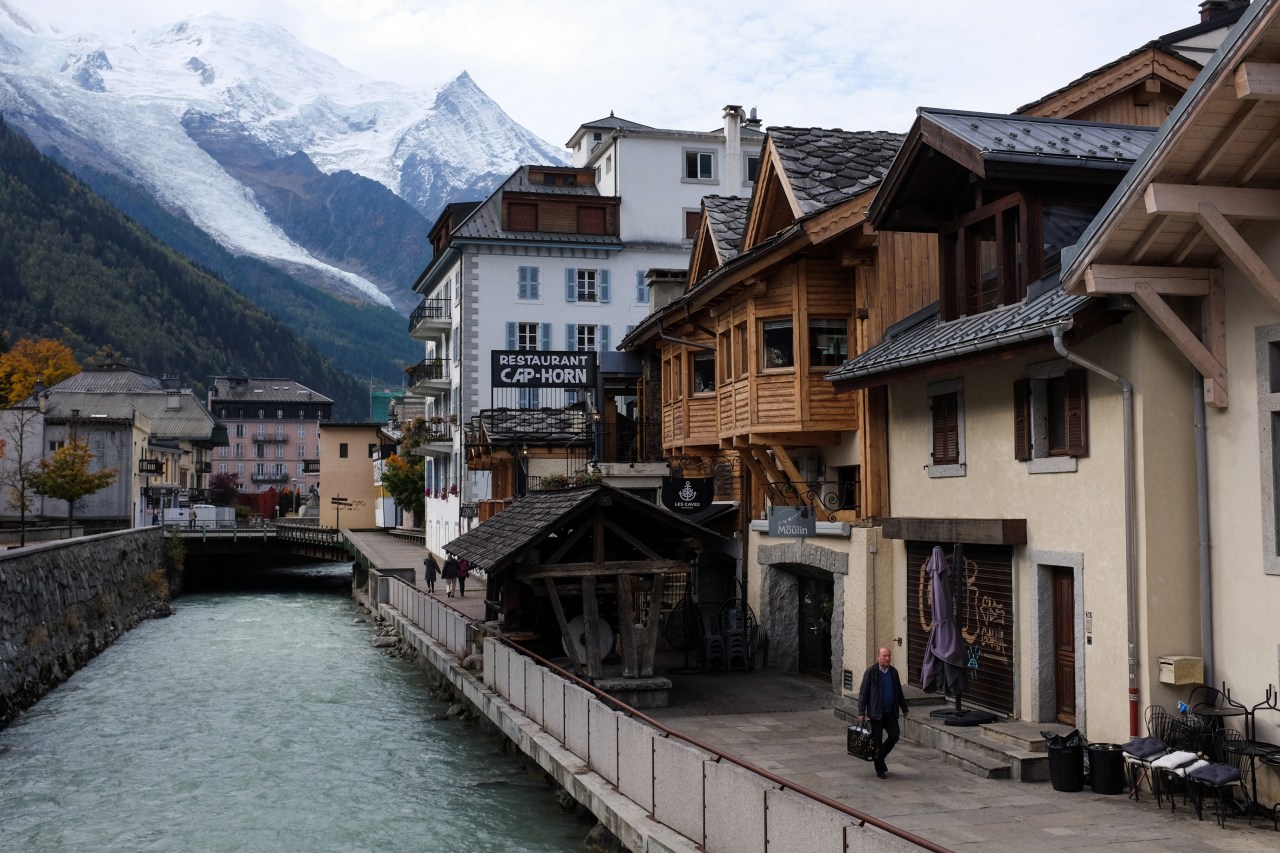
I could use a coffee. Let’s get one from La Jonction, a cafe at the end of Rue du Docteur Paccard, arguably Chamonix’s main street. They’ll bring it to us outside, so we can sit on the reclaimed benches and watch the summer tourists. Some amble past, licking the windows of shops; others hurry to the day’s activities. There are no locals heading to work because it’s a Saturday. Most perfect days are. We had a grasse matinée, as the French call it, literally a “fatty morning”: we slept in. We have plenty planned for today, but don’t worry—there’s no need to rush. The aproned waiter, who brings our drinks, claims this is the best coffee in France. I find that improbable. But it’s likely the best coffee in Chamonix.
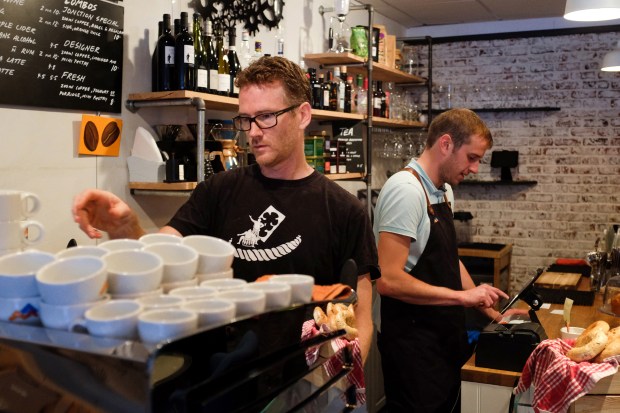
We could breakfast at La Jonction Coffee, but I’ve got a better idea. Let’s follow Rue du Docteur Paccard—named after the first person to summit Mont Blanc—until we get to the big square Place Balmat, christened for his co-climber. From there we’ll cut down to walk beside the raging, mineral-rich river Arve and out into the market square.
The smells are overwhelming to our empty stomachs—spit-cooking chickens and spices, crepes and galettes—but let’s take a stroll among the stalls. Most dominant are smallhold farmers, in floppy felt Savoyard hats, selling their vegetables and the vendors of local cheeses: meule, reblochon, Comté, Beaufort. Here’s a place selling Italian produce that arrived straight from the Aosta Valley this morning. The Italian border is only a 20-minute drive through the Mont Blanc tunnel from Chamonix—we could go there tomorrow. The border with Switzerland is not much farther. That earthy Gamay wine you just had a free taste of comes from there. You’re starting to see how this market we are meandering around is at the conjoin of three countries. We’re still in France, though, so let’s get something French to eat.
We share a shepherd’s breakfast on the riverbank. Not too heavy: just baguette and tomme de brebis, made from sheep’s milk and soft enough to spread with our fingers.
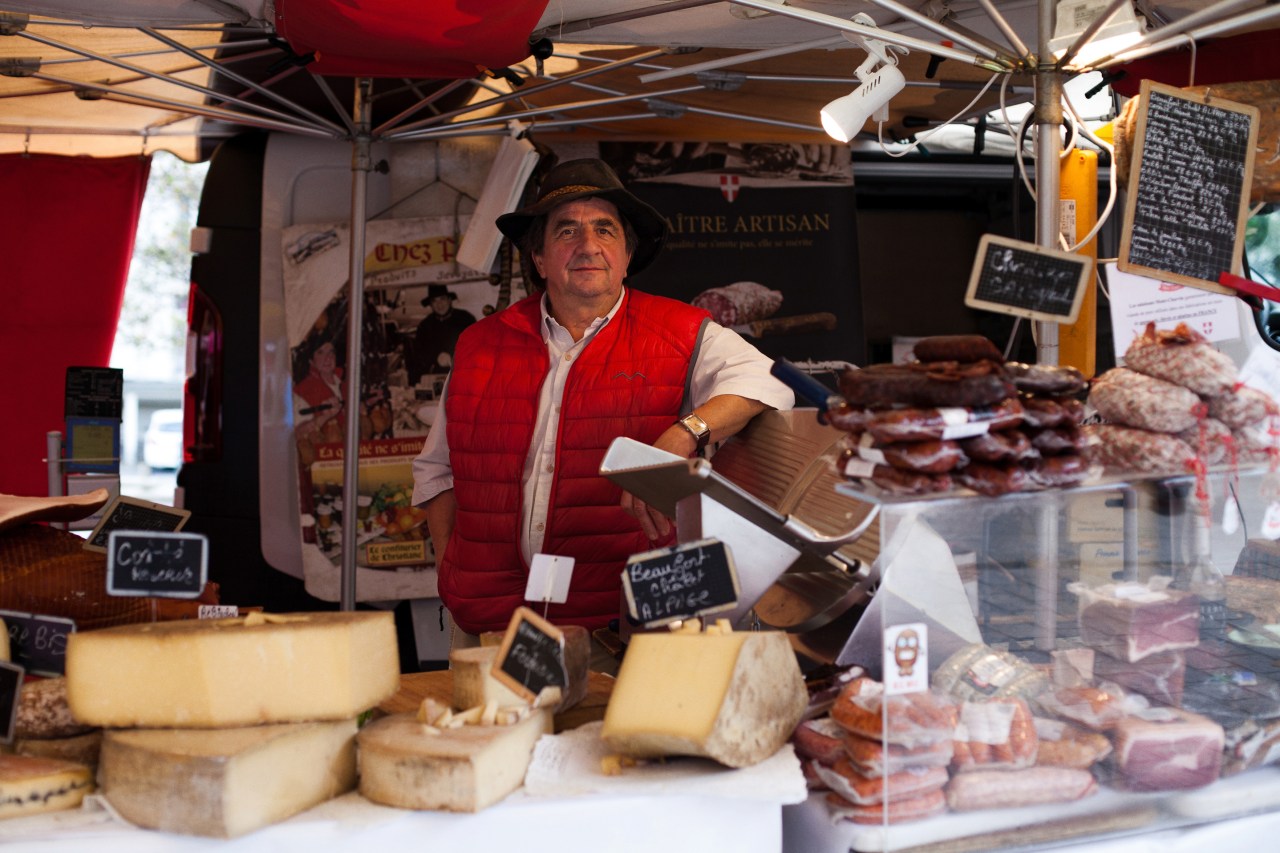
We get to the Montenvers station precisely on time for our train. It wasn’t far to walk. The carriages are boxy and bright red, like a kid’s drawing. Sit on the left there. You get much better views from the left-hand side. The seats are slatted wood, bucketed slightly, to hold you in on the climb. This is a rack-and-pinion railway, the height of technology when it opened in 1908, back when waxed tweed was as good as all-weather clothing came. The cogs haul us up the steep mountainside, past yearning pines and the stained-glass glows they cast on the forest floor. The Aiguilles Rouges range is across the valley from us. Red shale traces avalanche paths, where the scrub has been stripped away.
At one point we see the Caillet chalet: shutters painted turquoise and pink, the rest of its wood distressed to perfection by the weather, that finest of designers. Two mountain-tanned little girls wave at our train from a single upper window. Maybe we’ll go there for lunch.
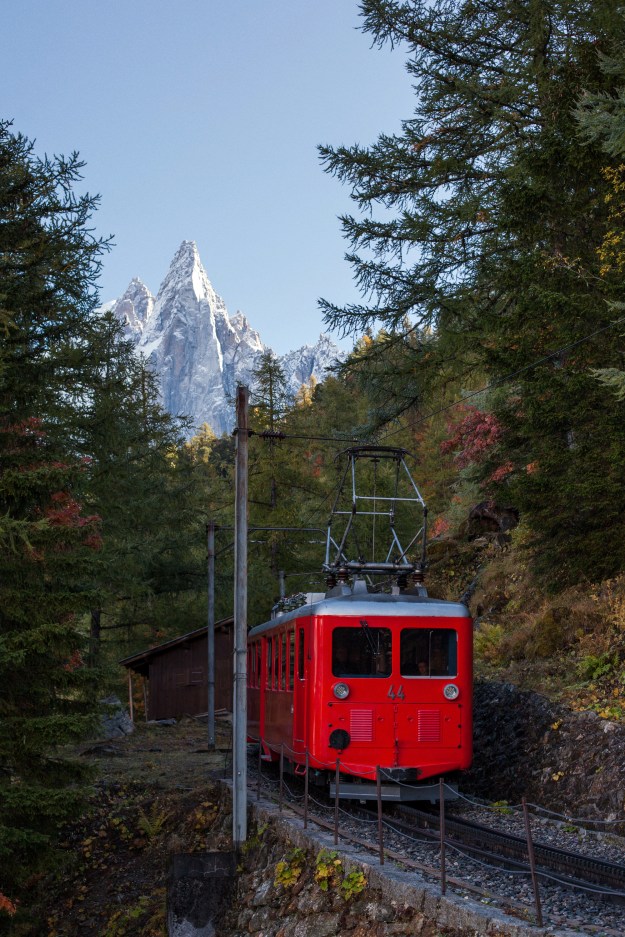

We disembark the train at Montenvers, the highest station at 6,243 feet. The sky is the piercing bright blue that you seem to find only over mountains and deserts. But the temperature difference from town is evident, and you are pleased you brought an extra layer.
That peak in front of us is the Aiguille du Dru. See the great pale scar down its front face? That came from a gargantuan rockfall over a decade back now. The whole valley shook when it fell. Beneath it is the end of the mythical Pas de Chèvre (Goat Path) backcountry skiing run.
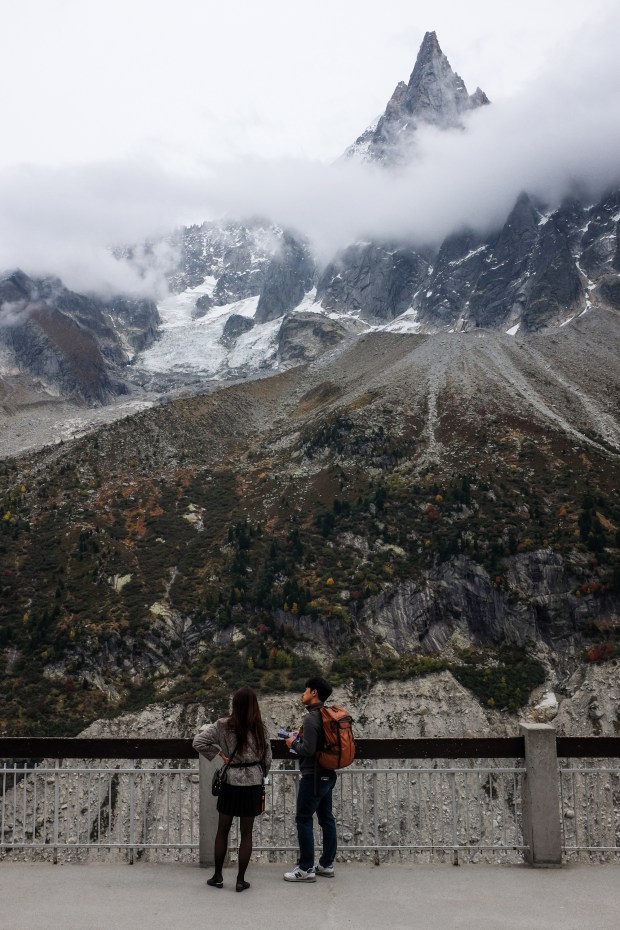
Even more famous is the Vallée Blanche route, with its runout on the Mer de Glace (“Sea of Ice”—the largest glacier in France). This time of year it looks more like a giant white serpent than a sea, winding its way remorselessly forward. Though it is undoubtedly, indisputably shrinking, it is still nearly four and a half miles long.
Two hundred years ago, after seeing this view, Mary Shelley set part of her novel Frankenstein here: the bitter, threat-laden argument where the misformed creature demands a mate from the doctor who created him—the crux of the death and woe that follow. The endless crevasses and glass-cliff seracs here also inspired the tale’s dénouement at the North Pole.
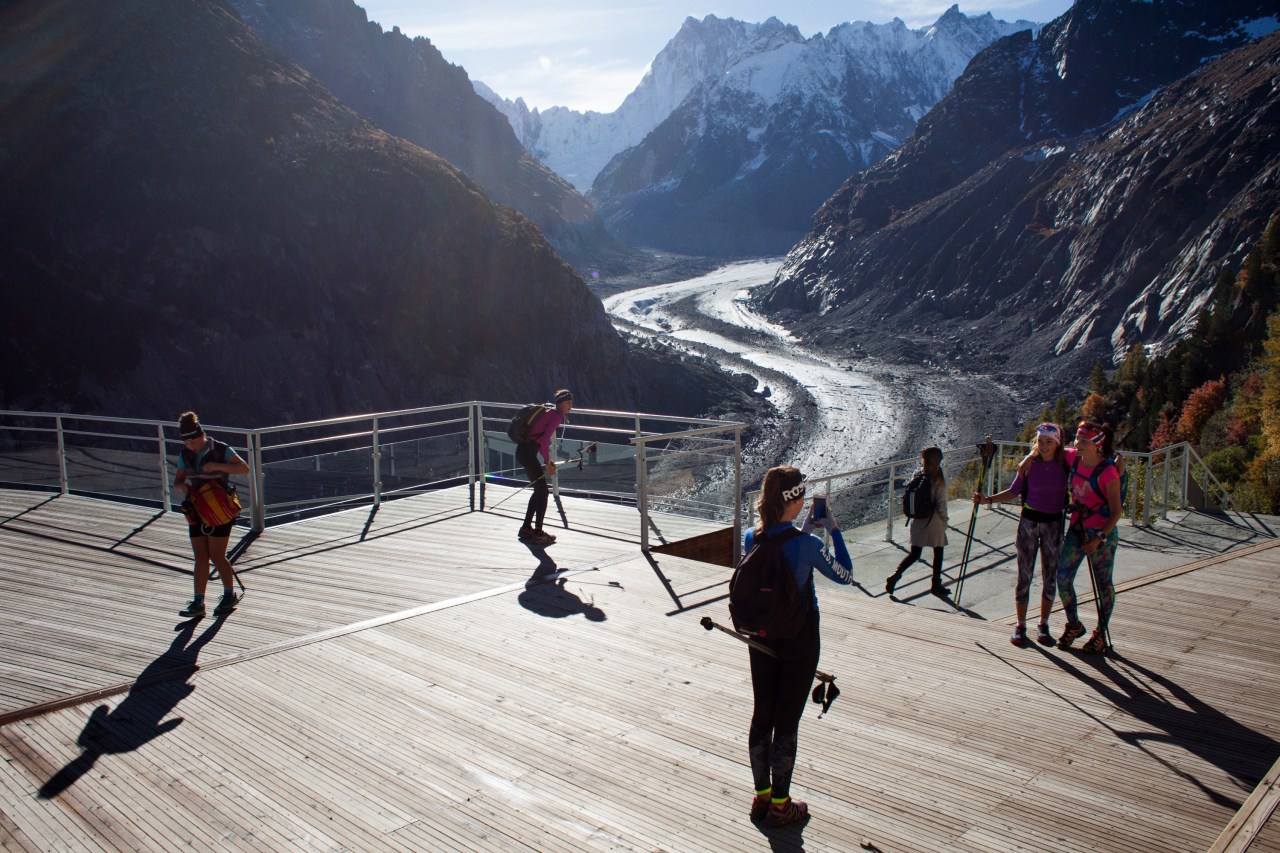
Folk are gathering for the train back down. We’ll hike it, though; my dog is already getting excited at the prospect. You didn’t notice her before? You gave her your last bit of cheese at breakfast, remember? She’s been with us the whole time. I always say that a walk without a dog is a walk half wasted. My dog’s half Labrador, half mastiff, half crazy, and it could hardly be a perfect day without her.
The trail down starts out on great chunks of rock but soon turns into a more comfortable single-file, boot-lace dirt track. Just us and the birds and the dog.
We’ve made it to the planked sun-trap terrace of the Caillet hut. It might almost be too hot, were it not for the gentle mountain zephyr. The only thing warmer is the welcome from the owners Solène and David, who live here in this forest clearing with their chirpy kids. The Caillet isn’t really a restaurant. It’s mainly something else—a chalet, a crèmerie, a buvette—but they do fantastic food. That’s the main thing to know. Everything is organic and sourced hereabouts, some of it foraged. They bake in an outdoor clay oven over split wood. We’re about halfway through the hike, so it’s the ideal point to stop.
Try the planche découverte du pays (the “country discovery” assortment). It will give you a taste of the local delicacies we saw at the market earlier. But leave space for a slice of one of the fruit tarts, sitting under glass domes in the shade.
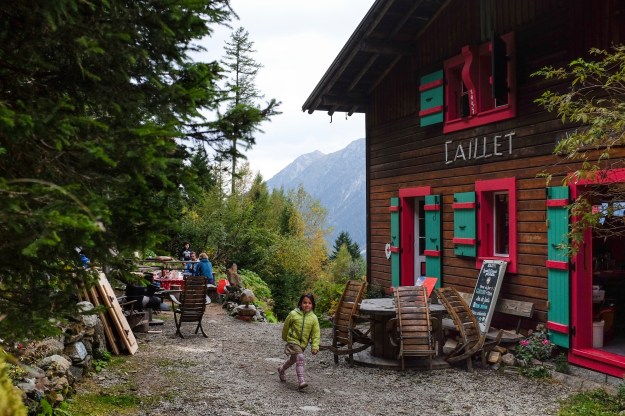

Once clear of the trees, Chamonix spreads and shines down the valley. The trail finally spits us out back in town, at the top of Avenue Michel Croz, among stone-built fin de siècle townhouses, now all subdivided into apartments. There’s a cluster of bars here. At night they spill onto the street, revelers wandering from one to another.
It’s thirsty work, hiking. We’d do well to stop for a beer or two. Moö Bar is one of my favorites. It’s a Swedish place owned by Orjan, an affable professional. Pull up a chair under the canopy here and watch the world wend by. I’ll get these.
OK, just one more. Then we should get ready for dinner. We’ll move on, though, down beside the meltwater of the Arve. In its earliest days Rue du Moulin was the place where the rapid flow powered corn-milling stone wheels. More recently its narrow passage was home to a row of dive bars. But gentrification, steady and relentless as the slide of the glaciers, has captured almost all of them now. The street is generally filled with the cosmopolitan crowd you see at the weekends. Many work in Geneva, and the strength of the Swiss franc makes even the fanciest cocktails seem cheap. For the most part Rue du Moulin’s rise is for the best. But for old times’ sake we’ll have a pint in Bar’d Up, a British pub that stays true to its roots. The same barman, Chris, is still grinning, while aging ski-bum punters deliver similar banter beneath a surfboard spattered with stickers. Happy hour. Soccer on the screen. The dark hides the dirt. I wouldn’t have it any other way.
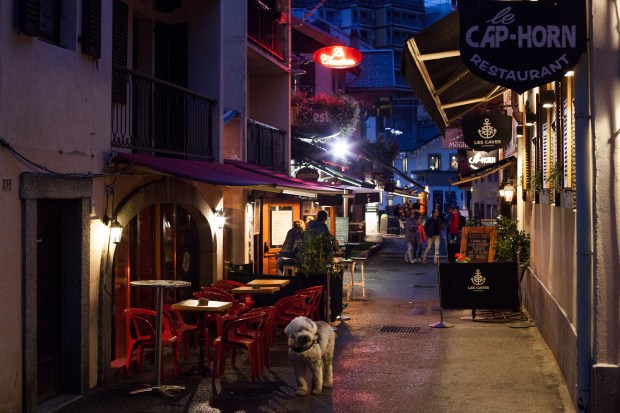
For contrast, let’s eat at La Maison Carrier. It’s the sister restaurant of the Michelin-starred Albert Premier but more relaxed and less expensive, emphasizing seasonal Savoyard food. It has its own smokehouse, and they grill meat and game over an open fire. Unfortunately, those who don’t eat pork can find themselves barred from a lot of the regional delicacies in Chamonix, and La Maison Carrier doubles down with its Menu le cochon de la tête au pied (head-to-toe pig menu). It trots out four portions, in fact, before the cheese course comes.
Whatever we have, we’ll settle it down with a Génépi or two afterward. The herbal liqueur is drunk throughout the Alps. It’s a wormwood relative of absinthe but an altogether gentler experience.
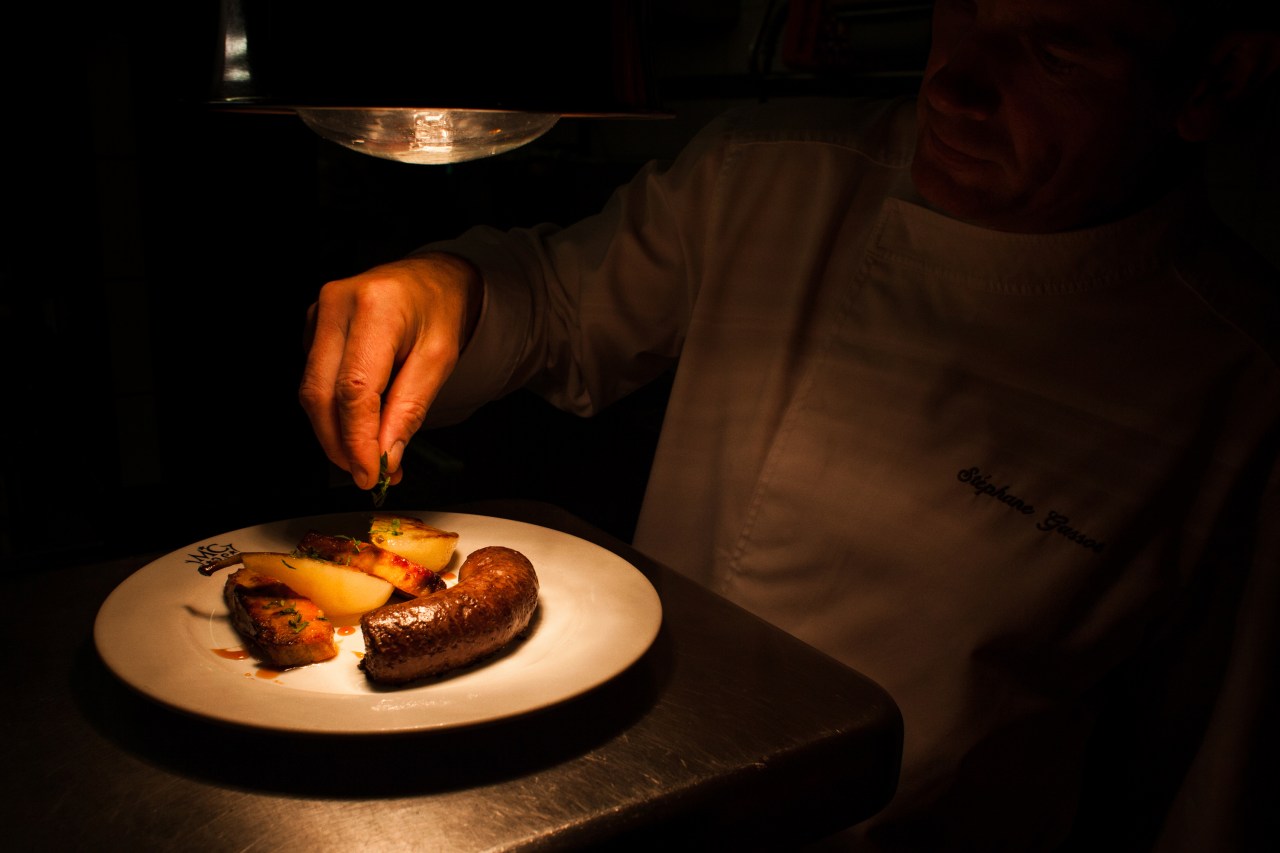
OK, just one for the road. Micro Brasserie de Chamonix is on the walk back. The Canadian bar brews its own beer.
Yes, Chamonix is home to everyone. Sharing a border with both Italy and Switzerland, Chamonix is quintessentially French yet simultaneously crammed with citizens of the whole world. Maybe you should stay?